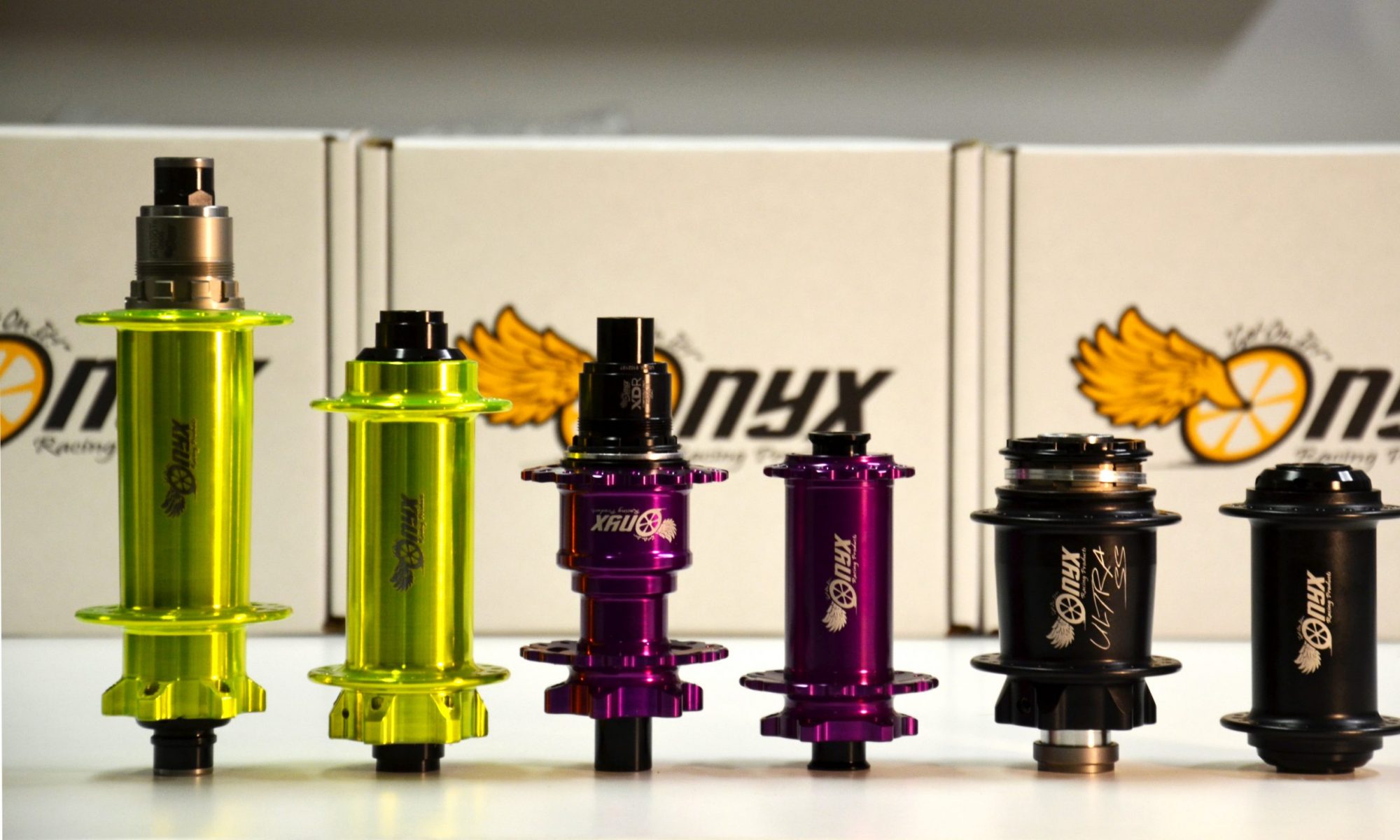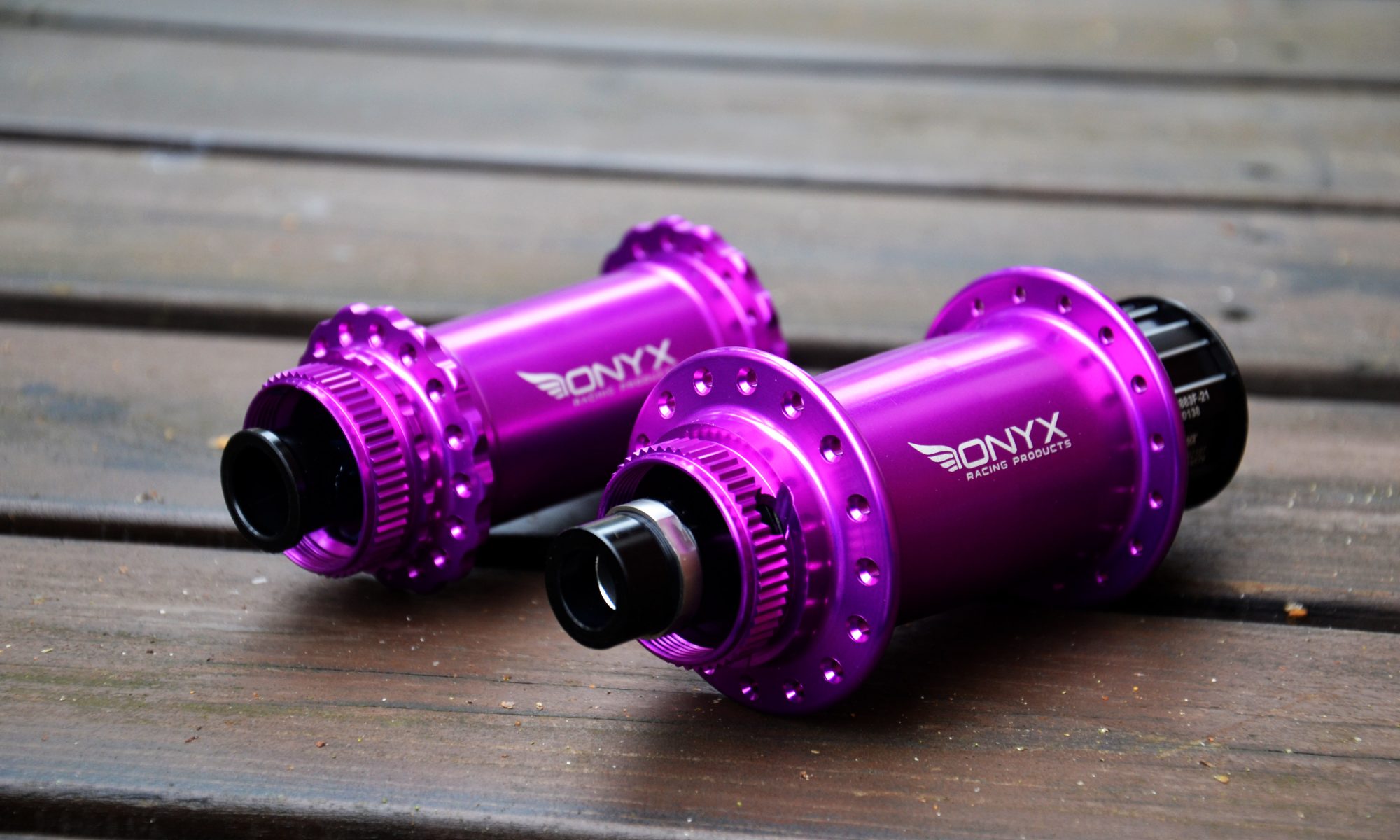Axle sizes, hub spacing and interchangeability between different models are questions that are asked on a regular basis. Therefore, it’s a subject matter that’s worth covering in detail. Read further to learn about different hub spacing dimensions and existing conversion options.
Hub Spacing and OLD
Hub axle spacing can be thought of as synonymous OLD which stands for over-lock-nut dimension. In other words, it’s the distance between the hub axle end caps. In the old days, almost all hubs used locknuts at the end of the axles to adjust bearing preload which gave birth to the term in question, and it’s been used ever since.
An important aspect of OLD is how it affects hub shell dimensions. If two OLD’s use identical hub shells, that means that a conversion between the two models can be made by swapping the axle and/or end caps. If on the other hand, two OLD’s require entirely different hub shells, no interchangeability exists between the two models.
An interesting aspect of the OLD standards is that they work in 7mm increments. A theme can be seen rather quickly when taking a look of rear hub OLD’s: 135mm, 142mm, 141mm, 148mm, 150mm, 157mm etc. The 7mm difference is accommodated by using end caps that are 3.5mm longer on each side. This is indicated clearly on Onyx Racing Products components. For example, a Super Boost/157mm rear hub employs an end cap with the following name: Endcap Assembly, Preload 3.5mm – 12mm Thru.
To get a somewhat comprehensive picture of the interchangeability between hub models and different OLD’s, see the table below. Hubs listed in the same row share the same hub shell and thus can be converted from one hub spacing standard into another by replacing the axle and/or end caps.
Note! ISO 6-bolt and Centerlock hubs employ different axles and sometimes end caps! In other words, if you wish to convert a gravel-specific 100x12mm Centerlock hub into a 100x15mm MTB hub, you need a Centerlock-specific axle for the job.
|
BMX |
|||||
|
Front |
100x10mm Bolt-on |
100x15mm Thru-axle |
100x20mm Thru-axle |
|
|
|
Rear |
110x10mm Bolt-on |
110x12mm Thru-axle |
110x15mm Thru-axle |
110x20mm Thru-axle (only available in the Ultra SS(D) model) |
|
|
MTB |
|||||
|
Front |
100mm Quick-release |
100x12mm Thru-bolt |
100x15mm Thru-bolt |
110x20mm Thru-bolt (non-Boost) |
|
|
110x15mm Boost |
110x15mm Boost, Torque Cap |
110x20mm Boost |
|||
|
Rear |
135mm Quick release |
135x10mm Bolt-on |
142x12mm Thru-axle*) |
||
|
141mm Quick-release (nearly non-existent standard) |
148mm Boost |
||||
|
150x12mm Thru-axle |
157x12mm Thru-axle |
||||
|
FAT |
|||||
|
Front |
150x12mm |
||||
|
Rear |
170x12mm Thru-axle |
177x12mm Thru-axle |
|||
|
190x12mm Thru-axle |
197x12mm Thru-axle |
||||
|
Road & gravel |
|||||
|
Front |
100mm Quick-release (non-disc) |
||||
|
100mm Quick-release |
100x12mm Thru-axle |
||||
|
Rear |
130mm Quick-release (non-disc) |
||||
|
135mm Quick-release |
142x12mm Thru-axle |
||||
*Note! Single-speed specific HGSS drivers, aluminium or chromoly, use dedicated axles. In other words, hubs with standard freehub driver bodies use different axles compared to HGSS ones.
A beautiful and very noteworthy thing about the MFU axle assembly is that the same axle assembly is used for all freehub driver body standards. Prior to MFU axles, the axle itself needed to be matched with the driver body. With MFU axle assembly only the driver body itself and in some cases, a matching axle end cap is needed.
Parts Needed
The components required to make the conversion complete depend on the case at hand. Sometimes only end caps are needed. This is the case for example when converting a 150x12mm DH rear hub into a 157x12mm Super Boost one.
On the other hand, often times the inner axle is required as well. This is the case in most front hub conversions, for example, 100x12mm -> 100x15mm or when converting from standard 110x15mm Boost to 20mm Boost which employs 110x20mm axle dimensions.
One noteworthy, and particularly nice thing about Onyx Racing Products hubs is the wide colour selection when it comes to end caps. There are 11 colours to choose from which enables anyone to achieve the desired finishing touch for their wheels. The colours available are as follows:
- Black
- Clear/silver
- Blue
- Gold
- Green
- Gray
- Orange
- Pink
- Purple
- Red
- Turquoise
FAQ
Last, but not least are some frequently asked questions that are repeated on a regular basis.
Can I convert my Boost rear hub to Super Boost? Or vice versa?
Unfortunately, no. These two standards use entirely different hub shells, and therefore the difference in OLD’s (148mm vs 157mm) cannot be accommodated by simply swapping axles and end caps.
What’s the difference between 20mm front hubs and 20mm Boost front hubs? Are they interchangeable?
Both standards share the same OLD: 110x20mm. However, 20mm Boost hubs use a wider hub flange spacing, and thus pushing the disc mount 5mm further away from the centerline of the hub. This comes with the following effects:
- Non-boost 20x110mm hub can be run on a 20mm Boost fork if fitted with a 5mm spacer under the brake rotor and accompanying longer rotor bolts. The wheel won’t be as strong as a one with 20mm Boost standard, though. This is because of the shorter distance between the hub flanges and the more shallow bracing angle.
- 20mm Boost hub can’t be run on a fork that employs the old 20x110mm standard because the rotor is pushed 5mm further out in relation to the brake caliper.
Is there a way to convert 142mm MTB spacing into 148mm Boost spacing?
No, because the hub shells used are entirely different.
Third party options that consist of a 6mm non-driveside axle spacer and matching rotor spacer with longer rotor bolts are found in the market. The use of these requires redishing the wheel. The performance and durability of these conversion kits cannot be commented on, and their use can void warranty.

